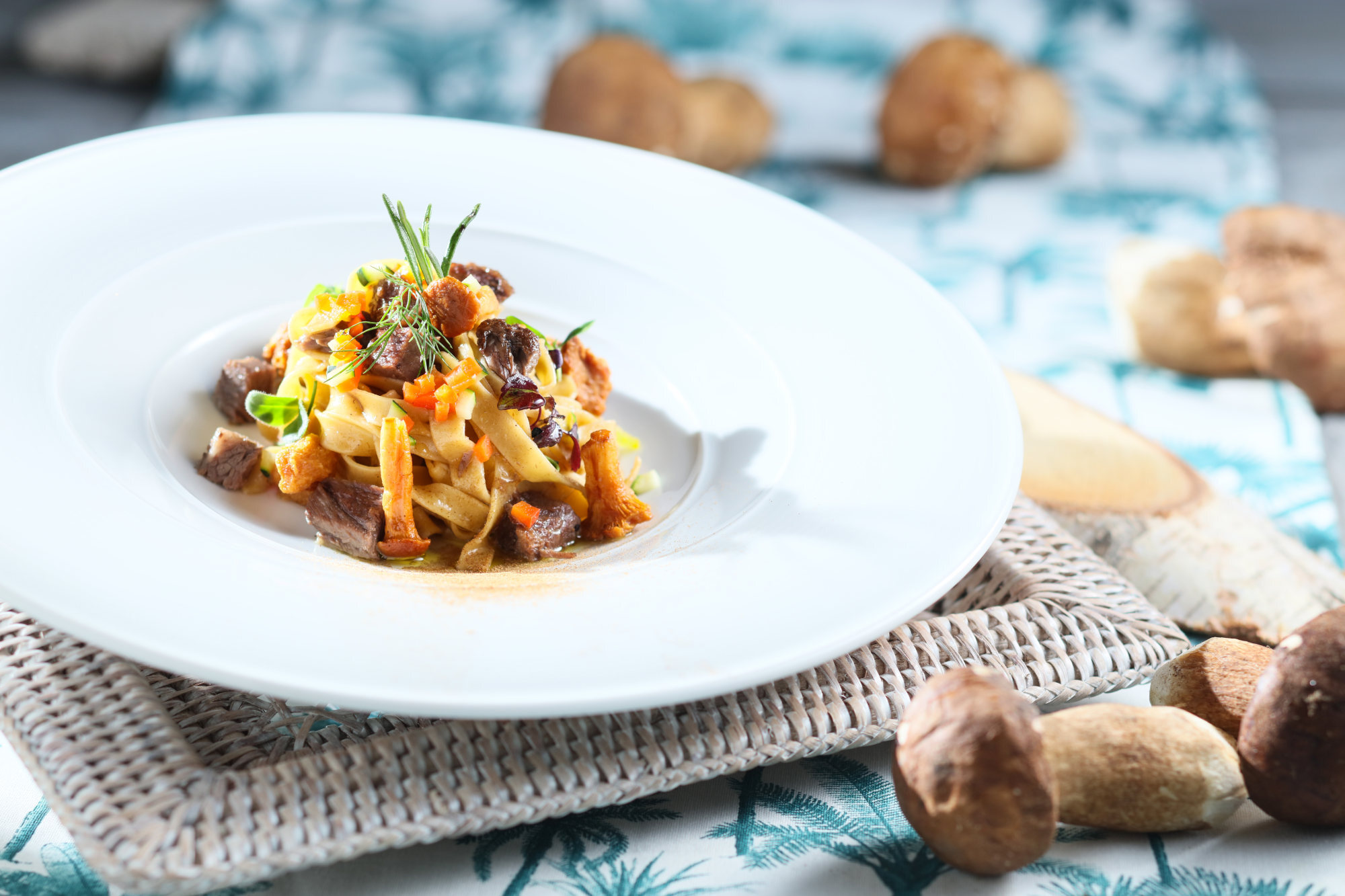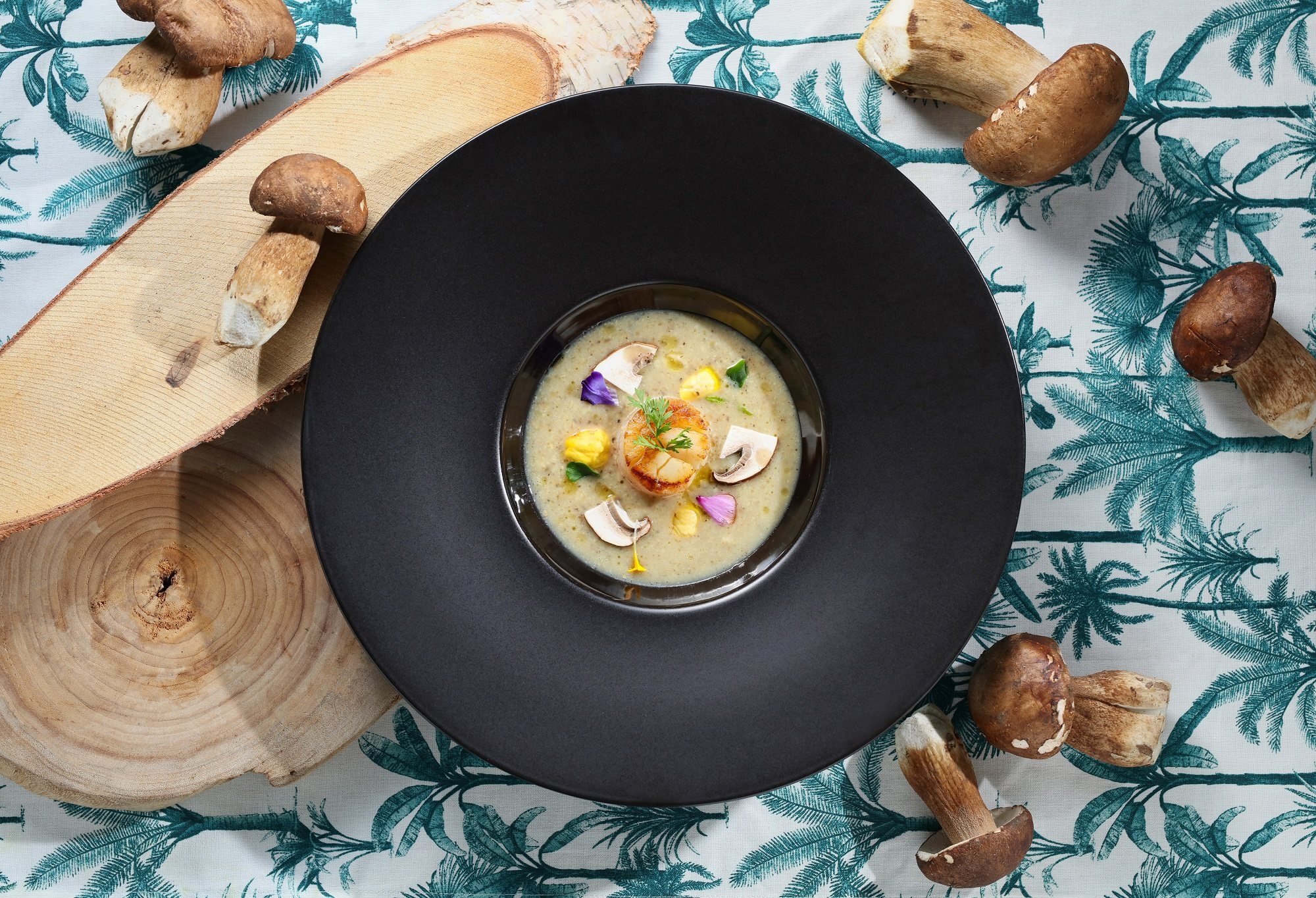
Profile | Italian chef who learned about Asian flavours in the Alps and southern Italian cooking in Hong Kong
- Andrea Delzanno learned to cook with his grandmother in Piedmont, Italy, made dinner every day after school and started working in Italy before moving to Asia
- He learned about Asian flavours from an Italian chef in the Alps, and mushrooms are his favourite ingredient, the chef at Cucina in Hong Kong tells Bernice Chan
“When I was young my parents were busy at work, so most of the time I stayed with my grandparents in the countryside in Piedmont, where I was born. Most of the houses have small farms or gardens, and my grandmother grew her own vegetables and fruit, like figs, pears, grapes and cherries.
“My grandfather went fishing and caught trout in the river behind our home. They’d usually pan-fry the trout with butter and herbs, seasoning and white wine, or grill it barbecue style. We ate the vegetables we grew and what was left over we put in the freezer and kept for winter so there was no need to buy vegetables.
“We raised rabbits and every Sunday my grandfather killed one for lunch. We also had chickens, so we had fresh eggs each morning. When it was mushroom season I went with my grandfather to pick porcini in the mountains and we cooked them with polenta.
“That was my childhood and it started my interest in food and cooking. I always cooked with my grandmother. She put me in charge of breaking the spaghetti and putting it in the boiling water, or cracking eggs to make gnocchi.

“On Sundays she cooked a big lunch for eight to 10 people, so she prepared a lot of food. She usually made rabbit stew with polenta, gnocchi or fresh pasta. My grandparents could survive without money, they had everything they needed.”
How did you start cooking?
“My parents divorced when I was 10 years old and my grandmother passed away around that time. I started to cook then because my mother worked, and after school I had to cook for myself and my older brother – he wasn’t interested in cooking. I made pasta, pan-fried meat or fish.
“When I was 13 years old I started studying at a culinary school in Piedmont. I was there for three years and I learned a lot. My teacher was retiring and had a lot of experience. He taught me the basics of Italian cuisine.
After I got my diploma, I started working in a restaurant.”
Where did you intern?
“The school placed me in a hotel by Lake Maggiore, in Piedmont, when I was 16. We had tourists from Japan, England and Germany from April to October – it was closed during the winter. Every day a tour bus brought in 120 people.
“I peeled potatoes, selected herbs from the garden, washed vegetables and cleaned the salad. We had a big brigade, about 20 people. It wasn’t too difficult because we had a fixed menu.

“The next job I had, for three years, was near my home and it was just me and the chef-owner. So I went from a kitchen of 20 chefs to two. When you work alone you have to do everything by yourself: you learn how to make dessert, bread, pasta. You have a lot more responsibility.”
Tell us about your mentor
“When I was 19 years old I met chef Corrado Michelazzo at Bellevue Hotel & Spa, in the Aosta Valley, near Piedmont and Mont Blanc in Switzerland. My friend always talked about Corrado like a mentor – one of the best chefs, very creative – and introduced me to him. I was interested to see something new and he had a Michelin star. Before then I only cooked traditional Italian food.

“I worked with Corrado for two years and he showed me things I never knew existed. Almost 20 years ago he added Chinese ingredients to his dishes in Italy because he’d been travelling to Asia. He made tagliolini with green tea, with shrimp and soy sauce.
“He also made coffee risotto with duck liver, and tuna Japanese-style with a sesame crust and teriyaki sauce – nobody did it at that time. A lot of guests wanted to try Corrado’s cuisine because it was very innovative.”
How did you get to China?
“Corrado introduced me to Asia, and in 2007 I went to Shanghai, where he opened a restaurant called Milano and I helped him run it. The restaurant was in Pudong, in a residential area.

“We served classic Italian dishes, made our own bread and gelato, which we also sold retail, and we grew our own basil, so much that we made pesto and sold that, too.”
What was your first time in Asia like?
“As someone from the countryside, I was impressed with the very tall buildings. Everything was open all day, every day. I was very excited, being around 20 years old at the time.
Practice makes perfect for two-Michelin-star Macau casino chef
“My sous chef was Shanghainese and went to culinary school in Italy, so he spoke fluent Italian. He was my assistant and translated everything for me, but the other staff didn’t speak English, so everything was challenging. Going out for dinner was a big challenge, so he took care of me.”
Where did you go afterwards?
“Later that year I went to Hong Kong to work for the Gaia Group. I’d met the group’s executive chef Paolo Monti in Italy as he is friends with Corrado. I worked in Gaia Ristorante for five years with Paolo, who taught me about Roman cuisine; Corrado was from the north of Italy.

“Paolo selects the best products, and makes sure the flavours are authentic. He introduced me to products from southern Italy and he taught me how to cook seafood. It was nice to work with him. His signature dish is pappardelle with rabbit stew ragu, which was his father’s recipe.”
You were at Sabatini Ristorante Italiano for three years. Why did you leave?
“Sabatini is a classic Roman restaurant, so you need to keep the same style. Eighty per cent of the à la carte menu never changes. If you change the menu, the guests still ask for the same dishes. I wanted to do something more light, different and modern.
“At Cucina, I can do whatever I want: create a special menu, some classic dishes, and have a special promotion every two months, like using porcini mushrooms or Alba white truffle. Before the pandemic we invited as many as eight guest chefs a year from Italy.”
What is your favourite ingredient?
“I love mushrooms. Whenever I smell porcini, I smell the soil of my hometown. I like to pan-fry them to get the best flavour, or cook them with some pasta with garlic and herbs. My home area is famous for risotto, so I like to make risotto with mushrooms.”

